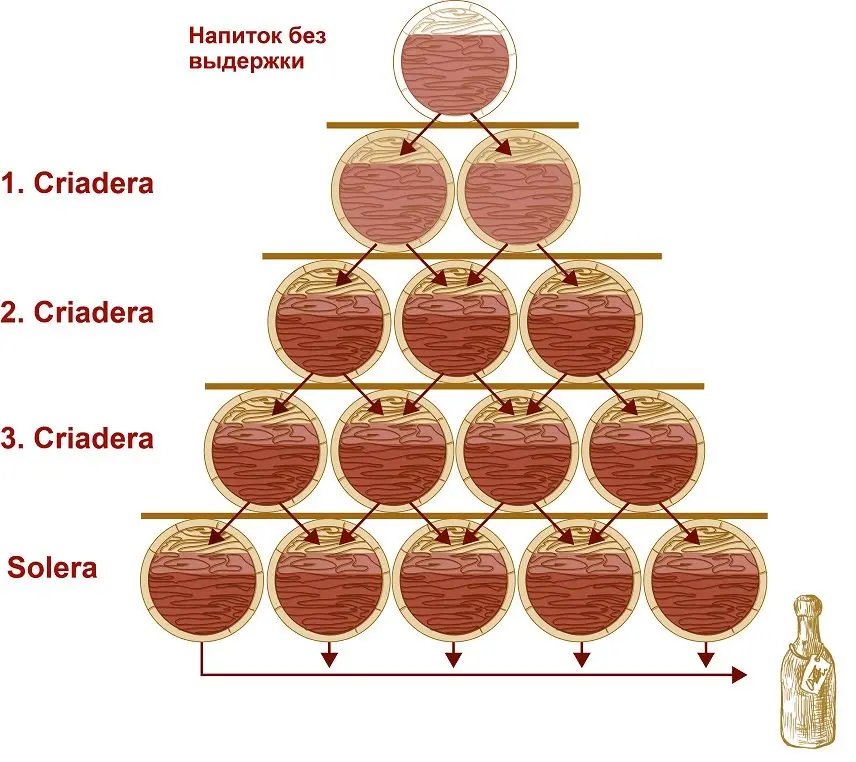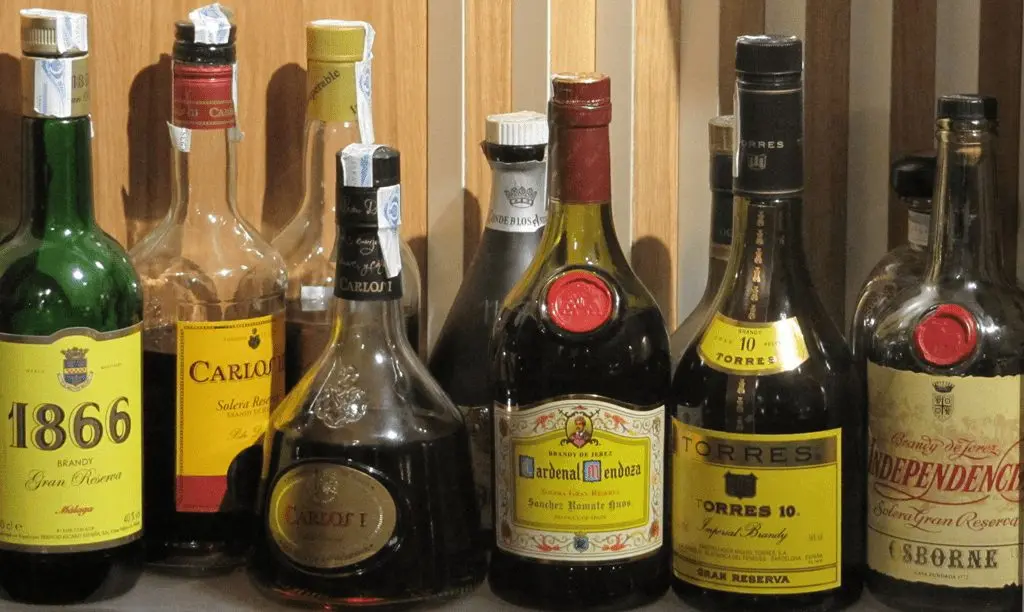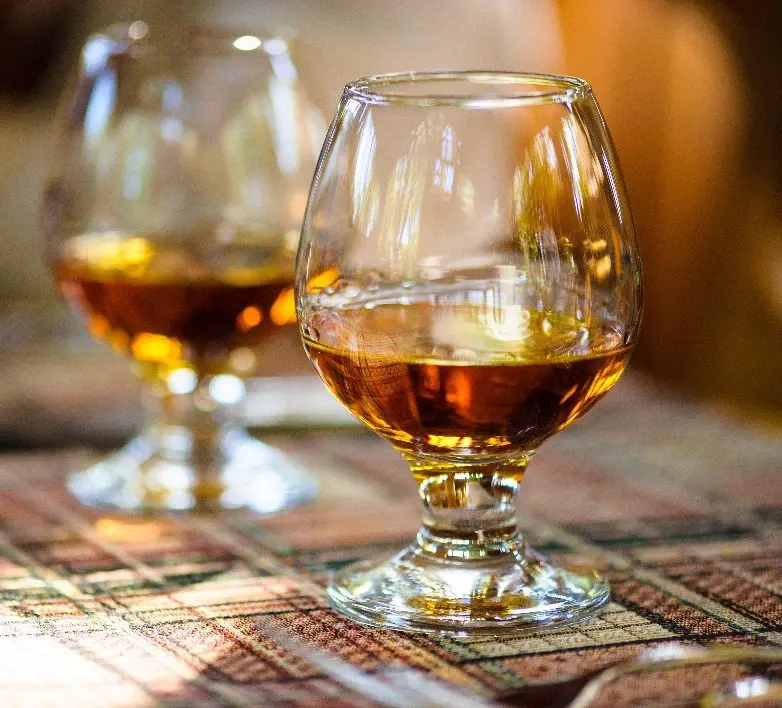Spanish cognac is, of course, an oxymoron, since cognac is only French. It is more correct to say “brandy”, another name is “sherry”, since in Spain the grape distillate is made in the region of the same name and aged exclusively in sherry casks, a fortified wine made from white grapes.
Production features. Like any brandy, the Spanish version is obtained by distilling wine, in this country – from the berries of the Palomino (Palomino) and Airen (Airen) varieties. For distillation, either continuous cycle columns or copper alambiks, melted with holm oak, are used. In the first case, an inexpensive product is obtained without a special bouquet with a strength of up to 95%, simply called a distillate. In the second – aromatic 40-70-degree alcoholic drink – holandas (holandas).
Double distillation of sherry brandy is practiced very rarely, as local masters believe that with each subsequent distillation, the drink loses its depth of bouquet and aroma. This is the main difference between Spanish brandies and cognacs, which are always distilled twice.
Then the semi-finished brandy is subjected to aging according to the Solera system – aged alcohol is periodically mixed with portions of a younger one.

Sherry brandy (Brandy de Jerez) – a name protected by origin, to belong to this category, “Spanish cognac” must meet three requirements:
- Produced exclusively in the Jerez region.
- Aged in American oak sherry casks.
- Pass the exposure according to the system of Solera and Criadera.
The taste of the drink is largely determined not so much by the production technology and the aging period, but by the barrel and the type of sherry previously contained in it. The most common varieties: Pedro Ximenez (Pedro Jimenez), Manzanilla (Manzanilla), Fino (Fino), Oloroso (Oloroso). During aging, the strength of brandy falls, so the drink usually contains 36-45% alcohol at the exit. If this figure is significantly higher, manufacturers add water.
History
Spanish brandy is produced in only one region – the Jerez Triangle, located in Andalusia. Once this area was inhabited by the Moors, who were forbidden by religion to drink wine. They came up with the idea of distilling the fermented juice into wine alcohol in order to use the resulting distillate for medical purposes. It is difficult to say who and when came up with the idea to age wine alcohol in barrels, but it is known for certain that at least in 1580 the production of “brandy” was so developed that the government imposed an additional tax on it.

In the XVIII-XIX centuries, the production of aged wine distillate became commercial: brandy was exported to the countries of Western and Northern Europe, mainly to the Netherlands, from where the Spanish “cognac” was already distributed throughout the world. So there was a second name for high-quality sherry brandy – holandas (holandas).
Types of spanish brandy
Sherry brandy is classified by aging in barrels and content of volatile substances (the higher the concentration, the richer the aroma):
- Solera (Solera) – exposure from six months, the content of volatile substances is not less than 2 g / l. Often, drinks in this group are a blend of distillate and olandas in a 50/50 ratio.
- Solera Reserva (Solera Reserve) – exposure from three years, the content of volatile substances from 2.5 g / l. Composition – 75% olandas and 25% distillate.
- Gran Reserva (Gran Reserva) – spends 8-10 years in barrels, the content of volatile substances is from 3 g / l, only pure alambika olandas is suitable for this variety.
Spanish brandy stamps
Torres (Torres). Catalan brand with a long history. The company appeared in 1870, although brandy has been produced “only” since 1928. Especially famous brand Torres 10 Gran Reserva, which is distinguished by a complex bouquet with nuances of spices, nuts, vanilla, dried fruits. The manufacturer is famous not only for grape distillate, but also for excellent wines; the brand’s products have repeatedly received numerous international awards.
Soberano (Collected). One of the oldest brands, produced since 1896 from Airen grapes, it is distinguished by a harmonious balanced bouquet with tones of citrus oils, vanilla, dark chocolate, figs. Successfully competes with Torres, the manufacturer of the brand, the company Gonzales Byass, several times became the best Spanish manufacturer of the year.
Cardinal Mendoza (Cardinal Mendoza). Another brandy with a history of more than 100 years – production began in 1887, and the Sanchez Romate distillery has existed since 1781. It is this brand that is preferred by the royal family of Spain, the British nobility, the cream of European society and even the Vatican. Sherry brandies from this manufacturer go well with strong coffee and good cigars.

Capa Negra (Capa Negra). Enough budgetary brand produced by the house Sandeman (Sandeman), its price is about half that of Cardinal Mendoza. Despite belonging to the democratic segment, it has a balanced and mild taste, it is made mainly from the Palomino variety. The peculiarity lies in the fact that for the manufacture they use hand-picked grapes from the banks of the Douro River. The resulting drink has a complex and interesting bouquet.
Carlos 1 (Carlos 1). It has an elegant bouquet with hints of nuts and dried fruits.
Veteran (Veteran). Another affordable option for lovers of inexpensive, but high-quality alcohol. Features – undergoes double distillation, aged in charred barrels, has a sweetish taste. Produced since 1956, famous for the recognizable emblem with a black bull.
Don Pelayo. A brand with over a century of history. It has a mild fruity taste and a pleasant price in the middle segment. The company is also famous for its creamy liqueur based on Grand Reserve sherry brandy.
How to drink sherry brandy
The drink is eaten with meat dishes: both fatty and dietary. Grilled vegetables are also considered a good gastronomic pair.

They drink Spanish brandy from special cognac glasses, slightly warming them in their palms so that the aroma is better revealed. You can drink brewed coffee.









